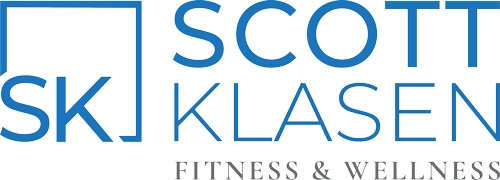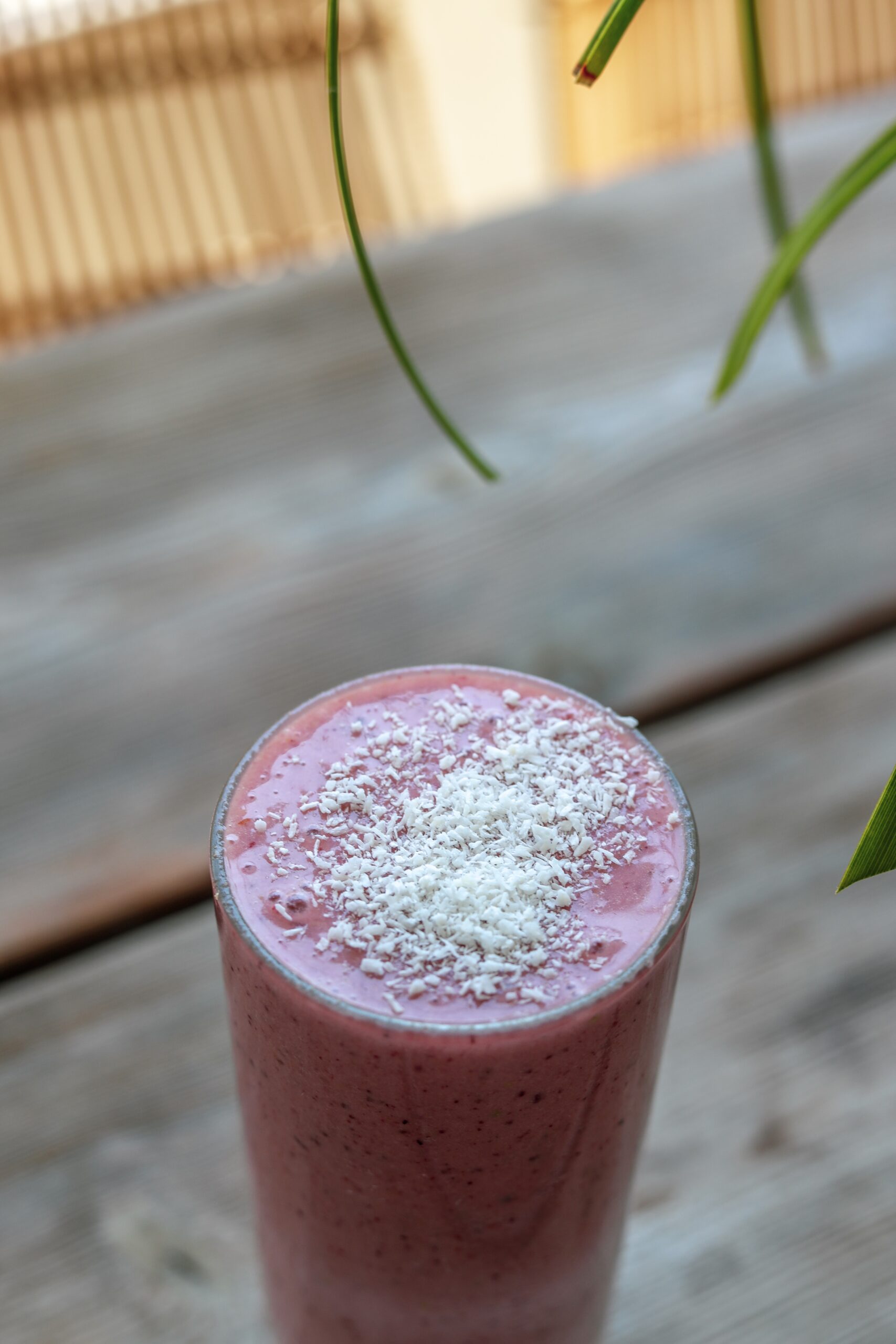When it comes to nourishing and refueling your body after exercise, having a go-to protein shake recipe is a must in my opinion. Not only can it be extremely effective in aiding the recovery process, but it’s also one of the easiest, quickest, and most convenient means I can think of to address all of your nutritional needs in one fell swoop.
Today, I thought that I’d share with you how I do this for myself.
I generally use these immediately following my workouts, and specifically after strength and resistance training sessions. However, when properly constructed, they can serve as an ideal meal replacement for any meal of the day.
I’m about to go into deep detail as to how I construct my protein shakes. If you’re interested keep reading, otherwise you can jump straight to the recipe at the end.
There are three essential components to my protein shakes: Protein, carbohydrate, and fat – with protein and carbohydrate being of primary importance for post-workout recovery. Technically, fat is not necessary in this instance, but since I use this shake as a primary meal – I add a serving of fat or two to make it a complete meal.
I typically aim for 30 grams of protein powder in each of my shakes. Higher is okay for some individuals but I wouldn’t go lower than 20 grams. If it were up to me, I’d use a whey protein powder because it just seems to work better for protein synthesis (muscle building and repair). Unfortunately, it doesn’t agree with me, so I use plant-based protein instead. The following are a few of my favorites:
Thorne VeganPro Complex – a pea and rice protein blend with a complete multivitamin and mineral profile plus added adaptogens for immune support.
Thorne Mediclear SGS – is an all-in-one daily detox pea and rice protein blend with a complete multivitamin and mineral profile, flavonoid phytosomes, and additional detoxification cofactors. This product helps heal the gut from the inside out and is beneficial when detoxification is necessary.
Vega Sport Premium Protein – vegan-based, multi-source blend of protein but without the added vitamins and minerals. It’s also NSF Certified for Sport if drug testing is a consideration.
Thorne Whey Protein Isolate – great tasting, high-quality protein designed for athletes, aging individuals, and anyone requiring additional support for muscle repair. This is what I’d use if I could. This too is NSF Certified for Sport.
For the carbohydrate portion of my shake, I use fruit. I like to use frozen fruit because it eliminates the need for ice, and because it’s frozen, I always have it on hand. Fresh fruit is fine, you’ll just want to add some ice – unless you prefer it more liquid and non-shake-like.
I can use upwards of two cups of fruit in my shakes. This might seem like a lot, but remember I am using these after workouts when carbohydrate replenishment is important. Most would do fine with half of that, and even 1/2 a cup depending on your situation. I’ll talk more about this in the “special considerations” section.
Finally, when adding fat to my shake, I’ll always add two tablespoons of one of the following: chia seeds, flax seeds, or hemp seeds. Sometimes I’ll also add a big spoonful of peanut or almond butter as well. I’ll say more concerning this in a bit too.
These are the three essential components that make up my protein shake. With the addition of water, I also include some other things that I might use all, most or some of the time. They are as follows:
Thorne Collagen Fit – this unflavored collagen supports the strength and health of joints, tendons, bones, and ligaments. It also contains nicotinamide riboside for healthy aging.
Thorne FiberMend – is a prebiotic fiber that keeps the gut healthy and in balance by helping to grow good bacteria, maintain healthy blood sugar levels, promote regularity, and support optimal digestive function. On a personal note, my gut is my weak link and I have to baby it more than most. The addition of this stuff has helped me tremendously.
L-Glutamine Powder – intense exercise can break down the intestinal lining which can compromise immune system health. L-glutamine is an amino acid that assists with post-exercise muscle and intestinal lining repair. I’ll typically add a scoop during cold and flu season for a little additional insurance.
Creatine – I’m an ectomorph body type which means putting on and keeping muscle is hard. Very hard! Creatine is an amino acid that promotes lean body mass, cellular energy production, and cognition. Let’s just say it’s noticeable when I do or don’t use this.
Ceylon cinnamon – can help lower blood glucose levels, and I tend to include it during the times I have a shake not immediately following a workout to help offset the potential glucose spike of the fruit.
Greens – you can never get enough of these! I’ll throw in a handful whenever available. Spinach tends to work well because other than changing the color of the shake, it doesn’t change the taste.
Cacao nibs/unsweetened shredded coconut /bee pollen – are nice toppers that can be mixed in for added variety. I like using the cacao nibs with my chocolate shakes, shredded coconut with the vanilla and bee pollen for both.
I mentioned I would discuss some “special considerations” concerning the assembling of your protein shake and it largely focuses on the carbohydrate and fat content.
In general, after exercise, you need and can tolerate more carbohydrates. I would say that 1/2 to 1 cup of fruit would be a good starting point. If you’re using this independent of exercise – like for breakfast before you head out the door, I’d err on the low side for better blood sugar management.
Consider using berries (strawberries, blueberries, blackberries, and/or raspberries) as they are more blood glucose friendly, as opposed to mango, pineapple, or bananas. You can also add extra greens and/or veggies (cucumbers work well) in place of some or all of the fruit.
Fat is an essential component of any meal. If there was ever a time to be more lax in fat intake, it would be immediately following a workout because protein and carbohydrates are the primary drivers for post-exercise recovery. At the same time, it doesn’t mean you can’t or shouldn’t include it.
However, when using the shake as a meal replacement outside of exercise, fat along with protein begin to take center stage. If stable blood sugar, optimal energy, and not having to think about food until your next planned meal sounds appealing – then adding extra fat while decreasing and/or eliminating some carbohydrates might be worth considering.
Do this by adding an extra tablespoon of chia, flax, or hemp seeds. A small handful of your favorite nuts, or a good quality nut butter works too. You can also substitute full-fat coconut milk for some or all of the water, or throw in some avocado.
If losing body fat is a priority, bring the fruit content down to no more than 1/2 cup of berries and possibly even lower. Feel free to experiment with various vegetables and leafy greens until you find something you like. Eventually…you will.
So there you go, you made it to the end! Enough of my ramblings, here’s how I put it all together:
Ingredients:
- 8-12 ounces water
- 2 T flax seeds
- 1 scoop creatine
- 1 scoop L-Glutamine
- 3/4 scoop FiberMend
- 1 tsp Ceylon cinnamon
- 1 scoop collagen
- 1 scoop chocolate protein powder (30g)
- 1 spoonful natural peanut butter
- Handful of spinach
- 1/2 of banana (if available)
- 1 cup frozen organic strawberries
- 1/2 cup frozen organic wild blueberries
- 1/2 cup combined frozen mango/organic cherries
- Cacao nibs
- Bee pollen
Directions:
- In the order listed, combine the above up to and including the protein powder in a Vitamix or other high-power blender, and lightly blend for 30-60 seconds.
- Add the remaining ingredients in the order listed except for the cacao nibs and bee pollen and blend until desired thickness and consistency.
- Pour into glass and mix in and top with cacao nibs and bee pollen.

